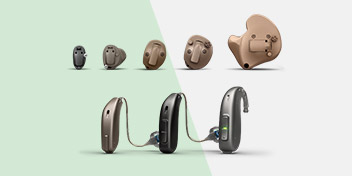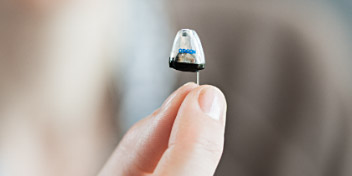Find out more about Oticon Zeal here:
In-the-ear hearing aids (ITE)

What are in-the-ear hearing aids?
In-the-ear hearing aids (ITE) are the most discreet hearing aid styles available. They have no external wires or tubes visible, as opposed to behind-the-ear hearing aids. ITE hearing aids are all custom-made, ensuring both a perfect fit and a discreet look.
When you select an in-the-ear hearing aid, one of our hearing care experts will need to take an impression or scan the inside of your ear, for a personalised fit.
Hearing aid types
3 features of hearing aids in-the-ear

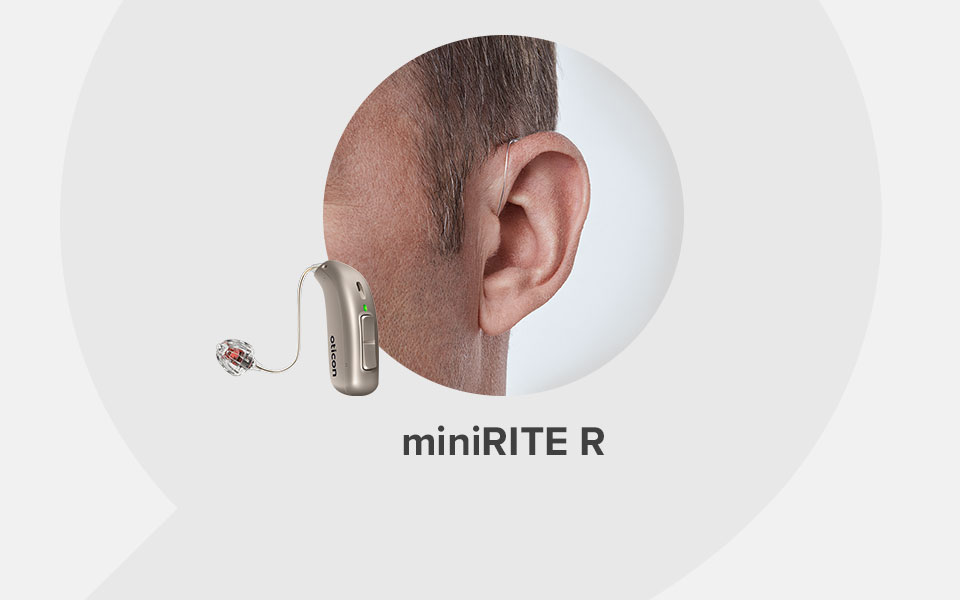

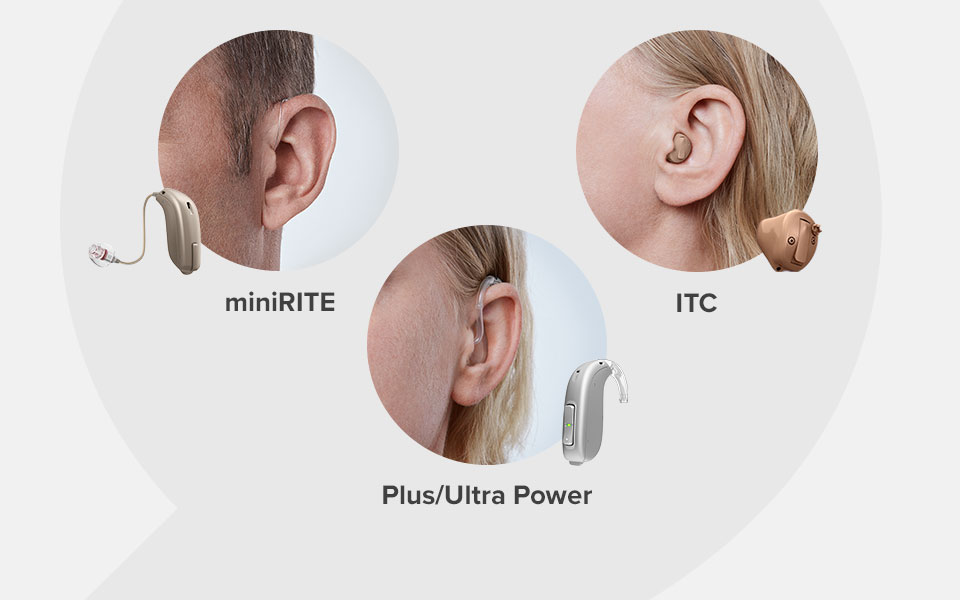
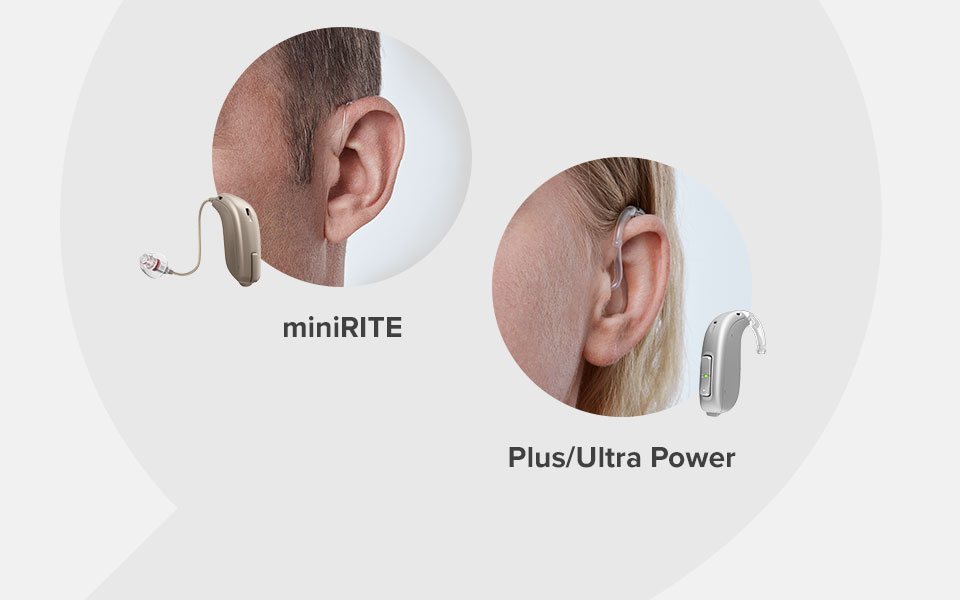


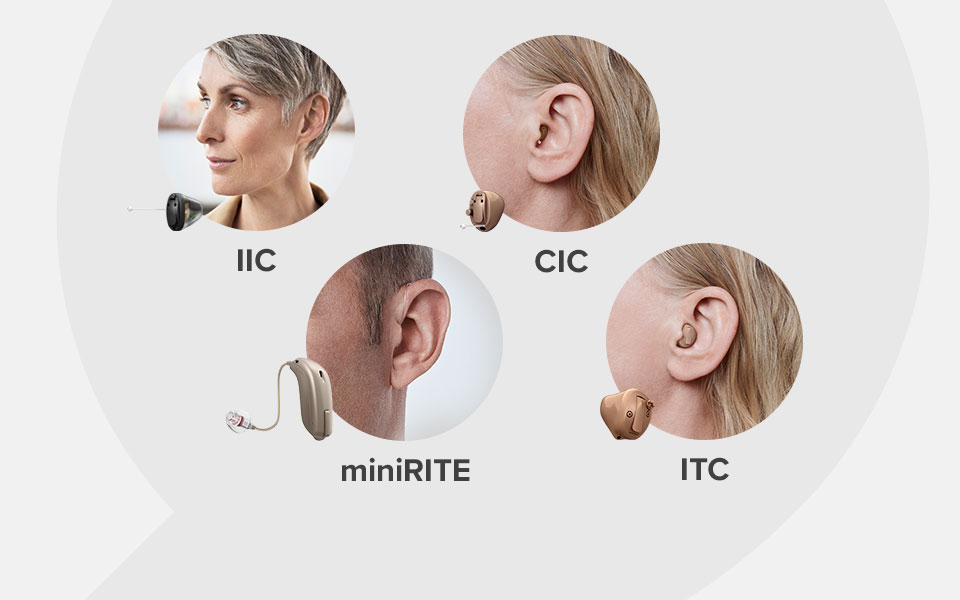
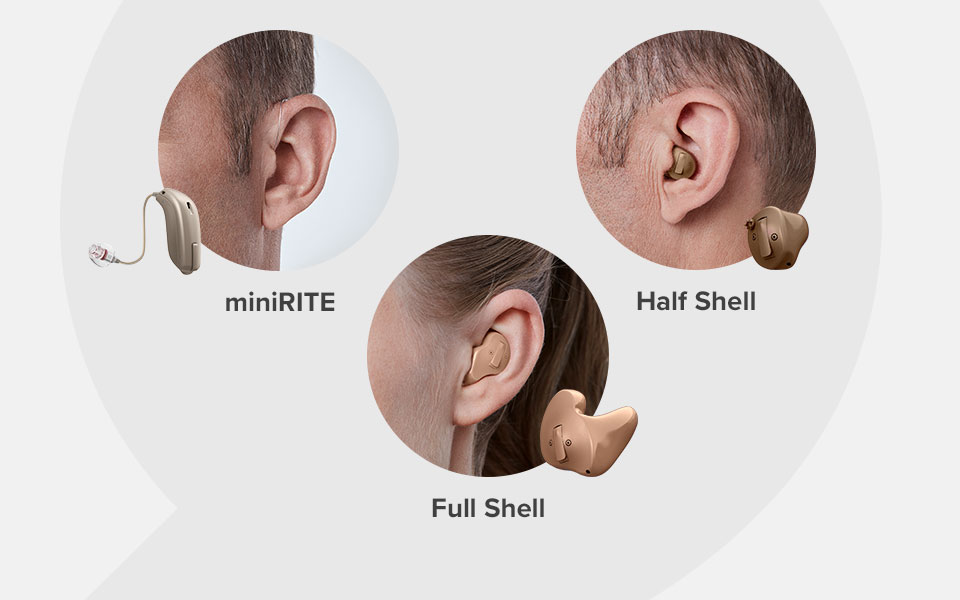
Hearing aid finder: see which type suits you
Take a minute to find out which hearing aid models are right for you.
Your result
Based on your answers, the following hearing aid types might suit your needs:
- miniRITE R
*The result of the test may only be used for guidance and is not meant to replace a more accurate measurement of your hearing abilities and needs by one of our hearing care experts.
Would you like to have a free hearing aid trial?
Your result
Based on your answers, the following hearing aid types might suit your needs:
- miniRITE R
*The result of the test may only be used for guidance and is not meant to replace a more accurate measurement of your hearing abilities and needs by one of our hearing care experts.
Would you like to have a free hearing aid trial?
Your result
Based on your answers, the following hearing aid types might suit your needs:
- miniRITE
- BTE Plus/Ultra Power
- In-the-canal (ITC)
*The result of the test may only be used for guidance and is not meant to replace a more accurate measurement of your hearing abilities and needs by one of our hearing care experts.
Would you like to have a free hearing aid trial?
Your result
Based on your answers, the following hearing aid types might suit your needs:
- miniRITE
- BTE Plus/Ultra Power
*The result of the test may only be used for guidance and is not meant to replace a more accurate measurement of your hearing abilities and needs by one of our hearing care experts.
Would you like to have a free hearing aid trial?
Your result
Based on your answers, the following hearing aid types might suit your needs:
- miniRITE R
*The result of the test may only be used for guidance and is not meant to replace a more accurate measurement of your hearing abilities and needs by one of our hearing care experts.
Would you like to have a free hearing aid trial?
Your result
Based on your answers, the following hearing aid types might suit your needs:
- miniRITE R
*The result of the test may only be used for guidance and is not meant to replace a more accurate measurement of your hearing abilities and needs by one of our hearing care experts.
Would you like to have a free hearing aid trial?
Your result
Based on your answers, the following hearing aid types might suit your needs:
- miniRITE
- Invisible-in-the-canal (IIC)
- Completely-in-the-canal (CIC)
- In-the-canal (ITC))
*The result of the test may only be used for guidance and is not meant to replace a more accurate measurement of your hearing abilities and needs by one of our hearing care experts.
Would you like to have a free hearing aid trial?
Your result
Based on your answers, the following hearing aid types might suit your needs:
- Halfshell/full shell
- miniRITE
*The result of the test may only be used for guidance and is not meant to replace a more accurate measurement of your hearing abilities and needs by one of our hearing care experts.
Would you like to have a free hearing aid trial?
What are the different in-the-ear hearing aid styles?
Take a look at how the five different ITE styles fit in the ear.
Invisible-in-the-canal hearing aids
Invisible-in-the-canal hearing aids (IIC) are the smallest hearing aids available. These custom-made hearing aids fit fully inside your ear canal, making them almost, if not completely, invisible. Tiny cords are attached to the hearing aid so that you can remove them easily. They:
- Adapt automatically to the sound environment
- Are discreet
- Can be vulnerable to ear wax and moisture build-up
- Are better for minimising wind noise (due to their placement)
- Do not have a directional microphone
- Can be difficult to adjust for those with limited dexterity
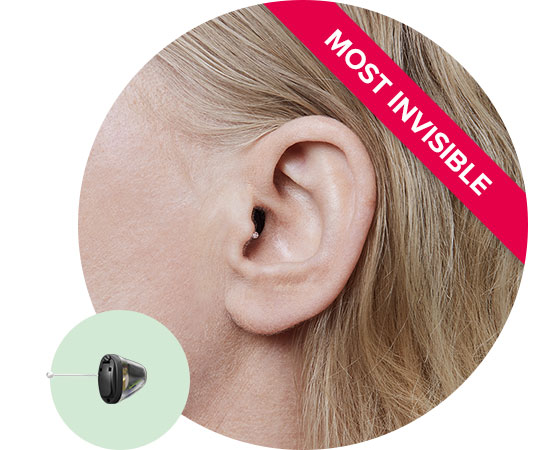
Completely-in-the-canal (CIC) hearing aids
Completely-in-the-canal hearing aids (CIC) were the smallest hearing aids available before the IIC hearing aids were introduced. But CICs are still discreet, and the only visible part is typically the face plate and battery drawer. They:
- Are custom-made to fit discreetly inside the ear canal
- Are mostly invisible to those around you
- Can accommodate an optional button that allows you to manually control settings for different environments
- Can be vulnerable to ear wax and moisture build-up
- Need adequate ventilation when they are used
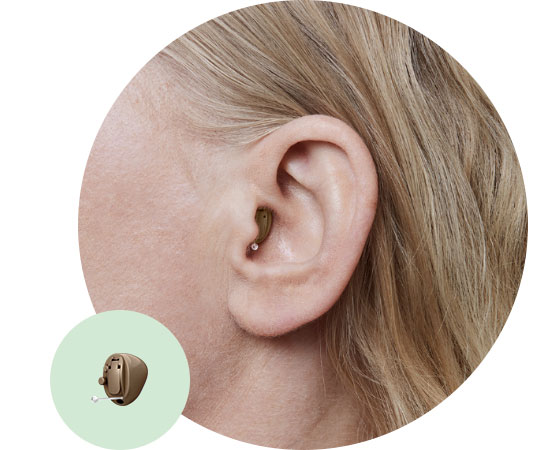
In-the-canal (ITC) hearing aids
ITC hearing aids sit in the lower third of your outer ear and are custom-made to fit your ear canal shape. They:
- Have a slightly longer battery life than other in-the-ear styles
- Feature wireless streaming in some models
- Balance out background noise (via a directional microphone)
- Are easy to insert and remove
- Have push button controls
- Are slightly larger than completely-in-the-canal (CIC) hearing aids
- Have a discreet design
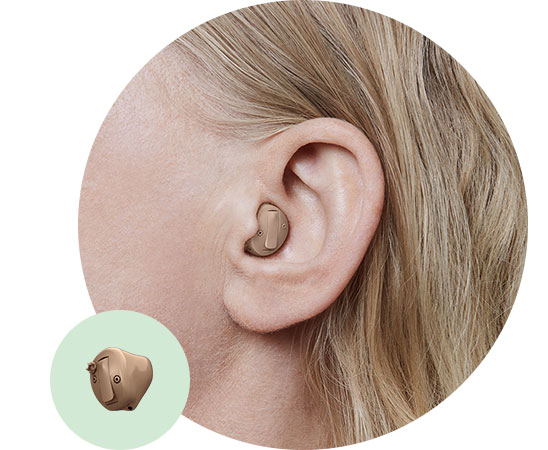
Half shell in-the-ear hearing aids
Half shell in-the-ear hearing aids are designed to fit inside half of your outer ear. The shell of the hearing aid is made to fit the shape of your ear. Half shell in-the-ear hearing aids:
- Are relatively discreet
- Have a longer battery life than in-the-canal hearing aids
- Are suitable for anyone with a more severe hearing loss
- Are a good option if you want an easy-to-handle device
- Can house additional, high-tech features
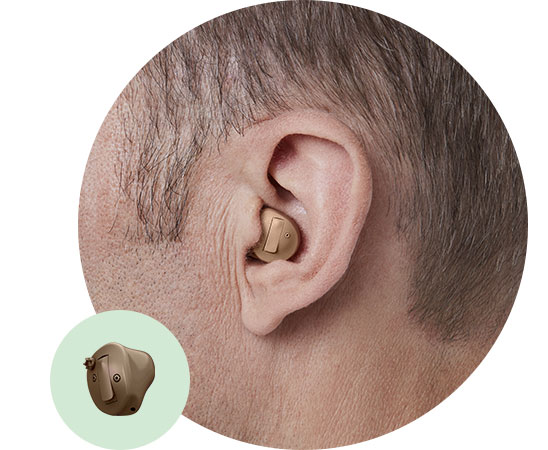
Full shell in-the-ear hearing aids
Full shell in-the-ear hearing aids are designed to fit the entire area of your outer ear. These types of hearing aids are the largest of the custom models since they have larger amplifiers for greater sound amplification. The shell is custom-made to fit the shape of your ear. Full shell in-the-ear models:
- Are relatively discreet
- Have a longer battery life than in-the-canal hearing aids
- Are suitable for anyone with a more severe hearing loss
- Are a good option if you want an easy-to-handle device
- Can house additional, high-tech features
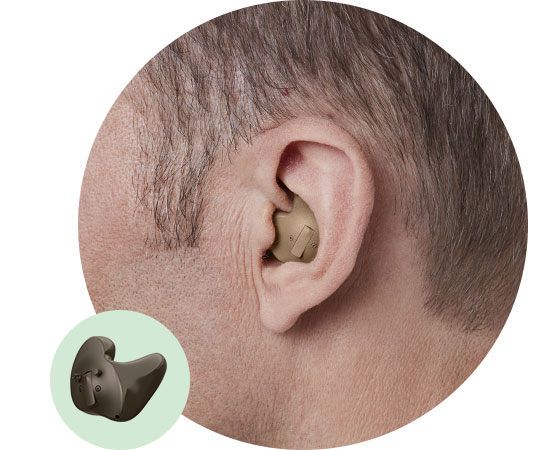
What is the smallest, most invisible hearing aid?
One of the smallest invisible hearing aids available is the Oticon Opn invisible-in-the-canal (IIC) which is invisible in 8 out of 10 users¹, offering excellent sound quality without compromising on technology.
- Award-winning technology
- Excellent sound quality
- Detects and prevents whistling sounds
|
Audio |
Visual |
|
Music |
A woman holds a hearing aid in her hand |
|
Music |
Meet Oticon OpnTM
She inserts it in her ear and touches her ear while looking at herself in the mirror |
|
Music |
She puts on her coat and takes a last look into the mirror before leaving |
|
Music Sounds of sirens and cars driving |
Zoom in on her ear and face.
The hearing aid with 360° sound Hear the sounds all around |
|
Music |
Zoom out. She smiles and gets surrounded by her friends. She hugs them and smiles |
|
Music
Sounds of glass cheering and people talking |
Zoom in. She smiles while listening to the different sounds |
|
Music Sounds of cars |
Zoom in on drums. Zoom out: she talks with a friend and two men come over with drinks.
Clearly hear different people speaking Even with noisy environments |
|
Music Sounds of seagulls |
She walks by a window and gazes at her reflection.
Custom-made to fit the ear comfortably. |
|
Music Sounds of sailing boats and the sea |
She walks over to her friends and talks with them. |
|
Music |
Open up to the world. With the new invisible* Oticon OpnTM
Small enough to hide in your ear.
Oticon logo |
Pros and cons of in-the-ear hearing aids
In-the-ear hearing aids are ideal if you're after a discreet style. They are also a good introduction to hearing aids for first-time users, since they sit out of the way of glasses – and they won't fly off when taking off your jumper! Here are some pros and cons to think about if you're considering in-the-ear hearing aids:
| Pros | Cons |
| Very discreet Since these hearing aids sit inside your ear canal, they are considered to be the most discreet style available. |
Disposable batteries In-the-ear hearing aids are rarely available with rechargeable batteries. |
| Less likely to pick up wind noise Due to their placement in the ear canal, they're less likely to pick up wind noise. |
Most styles are not suitable for severe hearing loss These hearing aids are mostly suitable for people with mild to moderate hearing loss. |
| Comfortable with glasses They don’t get in the way of your glasses. |
Not suitable for all ear canal shapes Some ear canals may be too small to be fitted with certain in-the-ear hearing aids. |


